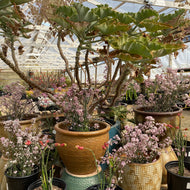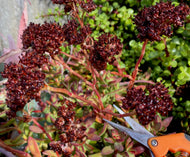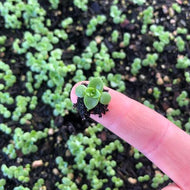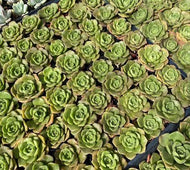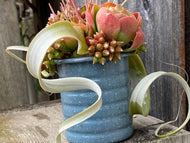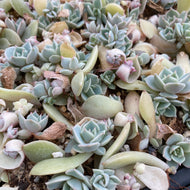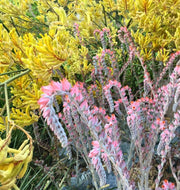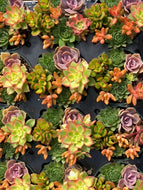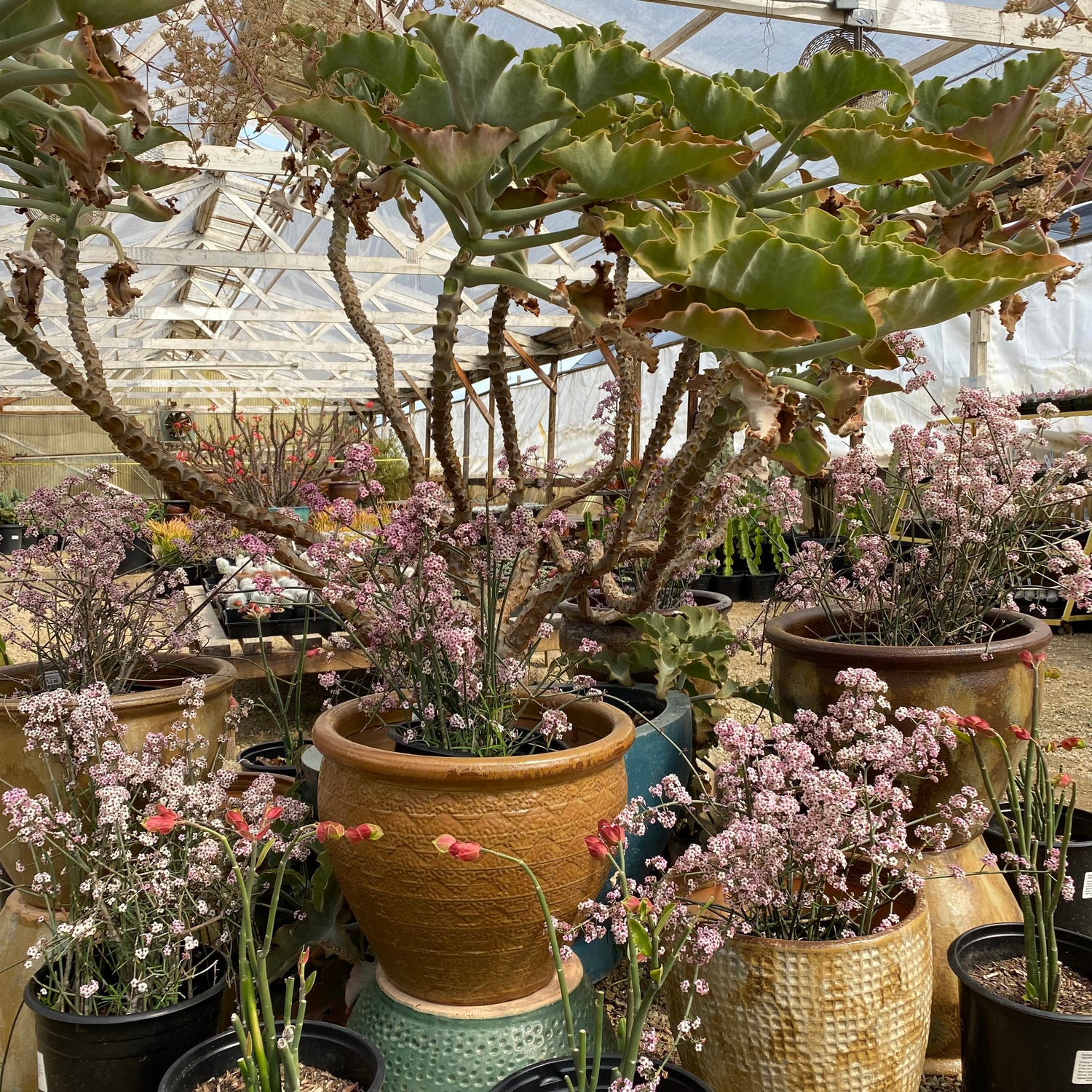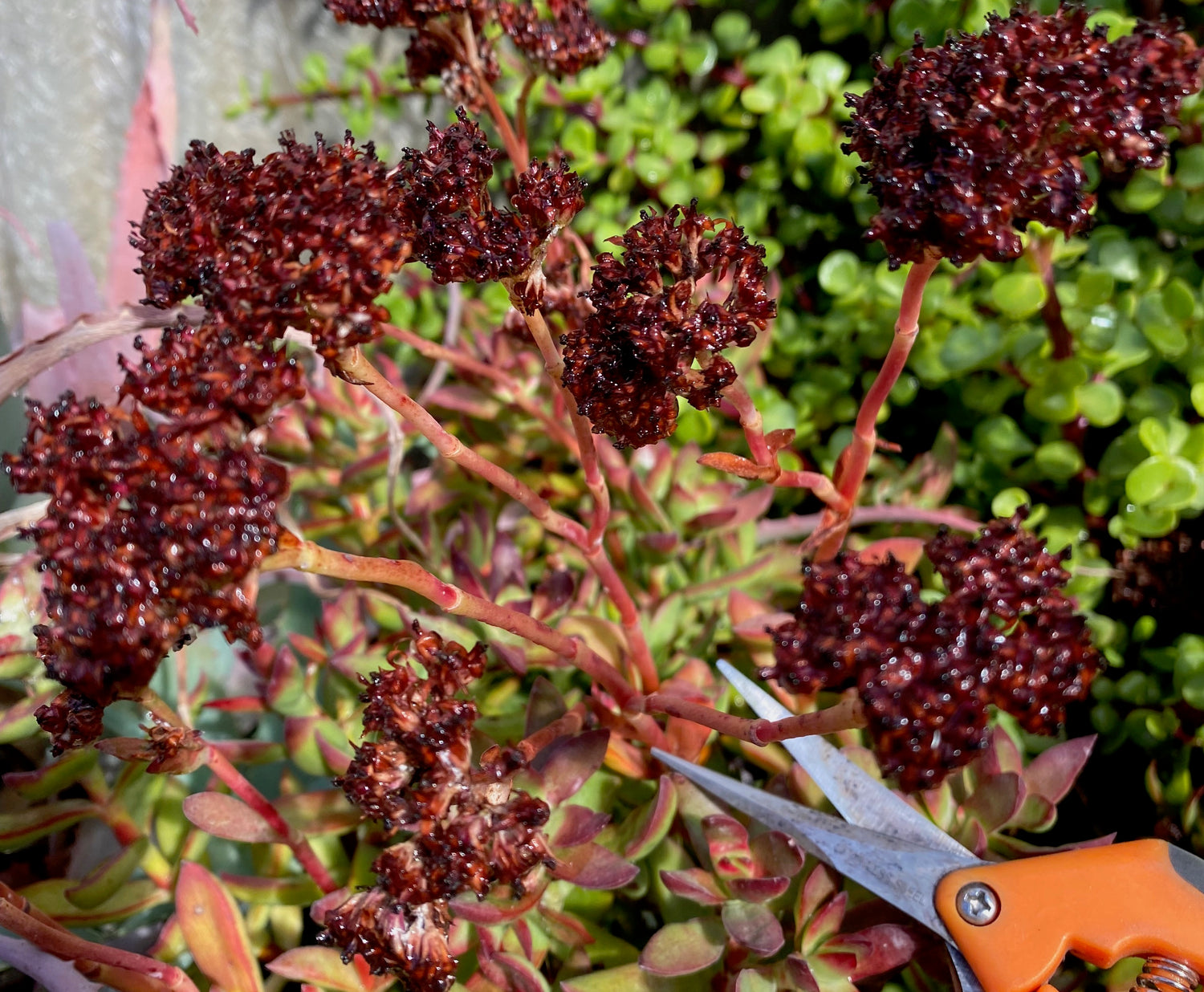Watering
Thoroughly wet your tillandsia 2-3 times per week; more often in a hot, dry environment; less often in a cool, humid one. In conditions of extreme drying, and consequent moisture loss, air plants cannot get replacement water from their roots like a terrestrial plant, or draw on internal reserves like a succulent.
The water you use is important. NEVER USED DISTILLED WATER. Softened Water is also a no-go because of the salt content. Filtered water, or tap water that has been sitting long enough for the chlorine to dissipate, bottled water, or RO are all fine. Pond Water and aquarium water works well as long as they aren't over crowded with fish and/or reptiles. They love rainwater!
If you live in a temperate climate with some humidity you may never need to water tillandsias hanging in a tree outdoors. Indoors, the hotter and drier the air, the more often you need to water.
After watering, plants should be given enough light and air circulation to dry in no longer than 4 hours. Wind can be a detriment, as it can make the plant dry too quickly. Remember that window fans can cause the plant to dry quickly as well. If the plant dries within a very short period of time it does not have the chance to re-hydrate at all.
Spray misting is insufficient as the sole means of watering but may be beneficial between regular waterings in dry climates to increase the humidity around the plant.
If the plant is in a shell, be sure to empty the water out. Tillandsias will not survive in standing water.
Under-watering is evidenced by an exaggerating of the natural concave curve of each leaf, or drying at the tips. Overwatering can quickly lead to rot, and the central rosette will become mushy and disintegrate.
Below: Air plants in the steps of Voyage to Tikal at Succulent Gardens

IMPORTANT: After wetting your plants thoroughly, turn them upside down and gently shake them. Water that collects near the base is will cause the plant to rot if left too long.
One last thing about watering your air plant: It is much better to water in the morning than at night. Air plants absorb the carbon dioxide from the air at night instead of during the daytime. If the plant is wet, it does not breath therefore, unless it can dry quickly at night, plan on giving morning baths.

Photo from presentation by Baylor Chapman at the 2015 Succulent Extravaganza
Air Circulation
Following each watering, Tillandsias should be given enough light and air circulation to dry in 4 hours or less. Do not keep plants constantly wet or moist.
Do not allow to dry too quickly though. 1-3 hours is optimum.
Temperature
Optimum temperature range for Tillandsias is 50 - 90 degrees F.
Fertilizer
Use bromeliad fertilizer (17-8-22) twice a month. It is GREAT for blooming and reproduction! Because Tillandsia are rather smaller than most Bromeliads, I suggest 1/2 to 1/4 strength. Other water-soluble fertilizers can be used at 1/4 strength (Rapid Grow, Miracle-Grow, etc.) if bromeliad fertilizer is not available.

